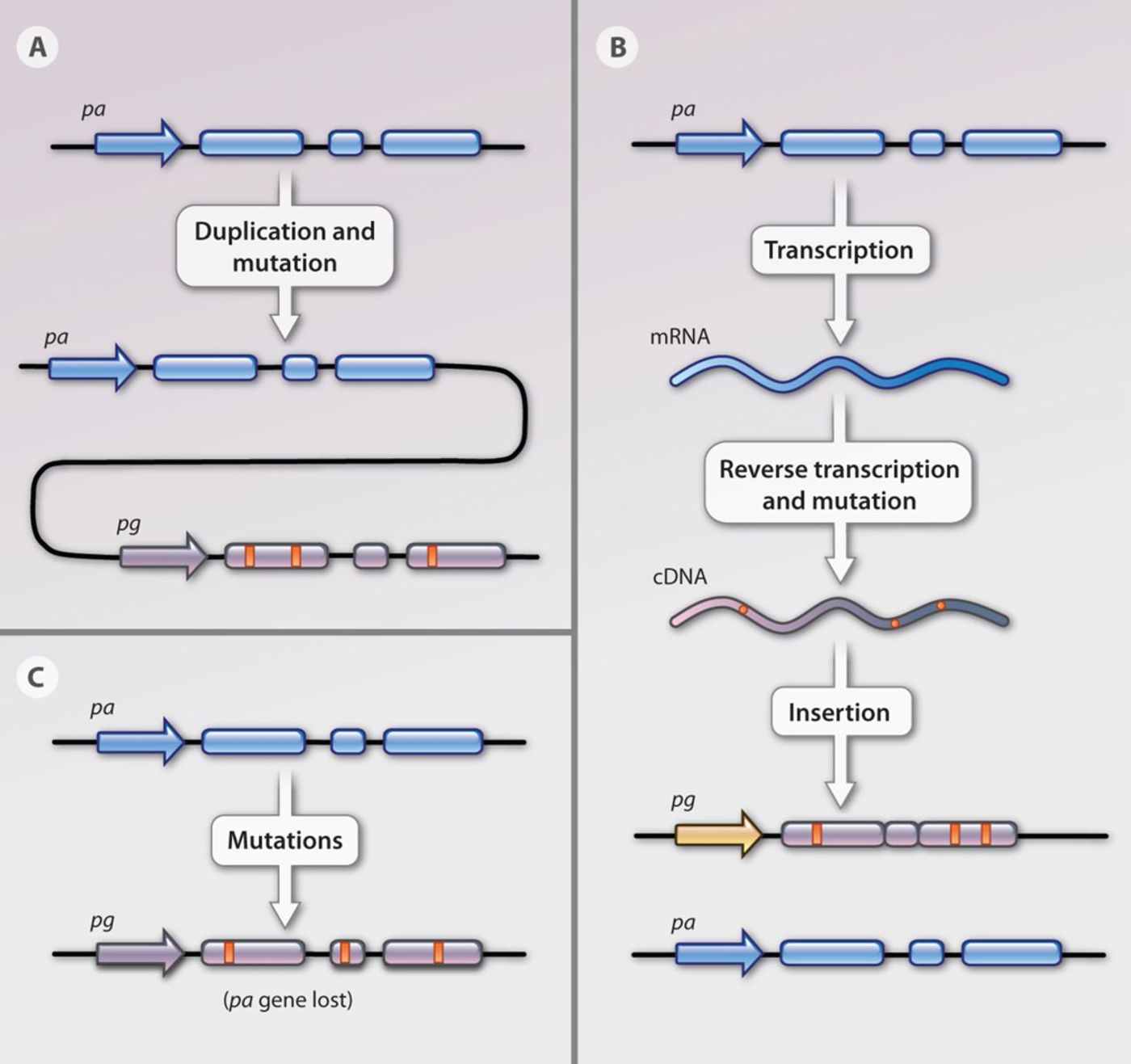If you’ve ever taken a biology class, you have an understanding of what a gene is. You would be familiar with the central dogma of biology: a DNA sequence is transcribed into a messenger RNA (mRNA) transcript, which is then translated into a protein. You would also know that some RNAs do not get translated into proteins, such as the rRNA and tRNAs that are used in translation. Go a little bit deeper, and you would have learned about other types of noncoding RNAs, like miRNAs and how they can regulate gene expression by complementary binding to mRNAs and prevent their translation. What you may not have learned about in any biology class is what a pseudogene is.
What is a pseudogene?
Essentially, a pseudogene is a nonfunctional copy of a protein-coding gene. The first pseudogene was discovered in 1977 and, until very recently, pseudogenes were thought to be irrelevant byproducts of evolution scattered throughout the genome. Pseudogenes are introduced into the genome by reverse transcription of an mRNA that is mutated and inserted back into the DNA or by duplication and mutation of the parent gene. The pseudogene could consist of just one exon of the parent gene (a processed pseudogene) or it could include the whole transcript from the parent gene (an unprocessed pseudogene). Even though many people believe that pseudogenes are “junk genes,” what little research there is on this topic suggests that the transcriptionally active pseudogenes play an interesting role in cancer.

Pseudogenes and cancer
Pseudogene expression in cancer is very specific to the tissue and type of tumor, and their function varies. Some pseudogenes act as tumor suppressors while others are associated with tumorigenesis and more aggressive cancer.
For example, PTEN is a known tumor suppressor protein that is regulated at the translational level by miRNAs. PTENP1 is a pseudogene derived from PTEN that can also bind the same miRNAs. In a process called “miRNA sponging,” PTENP1 absorbs the miRNAs that would bind PTEN mRNA, allowing for more PTEN mRNA to be translated into a functional protein. Loss of PTENP1 leads to tumorigenesis because there is less PTEN being produced. In this example, the pseudogene PTENP1 is acting as a tumor suppressor.
However, this “miRNA sponging” is not always good. Elevated levels of HMGA1, a nuclear protein associated with replication, is a feature of cancer and is associated with a poor prognosis. HMGA1 has multiple pseudogenes, but high levels of HMGA1P6 and HMGA1P7 in particular are associated with more aggressive cancers. These two pseudogenes trap the miRNAs that would suppress translation of HMGA1, allowing for more expression of functional HMGA1 protein.
These are just two examples of pseudogene involvement in cancer, but there are many more. Because pseudogene expression is tissue- and cancer type-specific, pseudogenes could be exploited for more targeted therapies or as a diagnostic tool. Pseudogene expression could even be used as a prognostic marker. Overall, it’s clear that pseudogenes are not genome junk and are clinically relevant for cancer.
Sources: review from
Tumor Biology, review from
Frontiers in Medicine, and review from
Science Signaling









